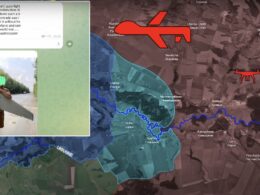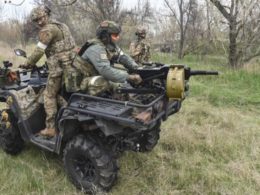Day 890: 1 July.
Today, there are a lot of updates from the Kharkiv direction. In the Liptsy region, the most interesting news revolves around the ongoing fierce battles. Ukrainian forces are tactically aiming to weaken Russian troops by severing their supply and reinforcement lines. Meanwhile, Russian forces have attempted to counter this tactic with an offensive towards Liptsy, but their efforts have resulted in a significant setback.
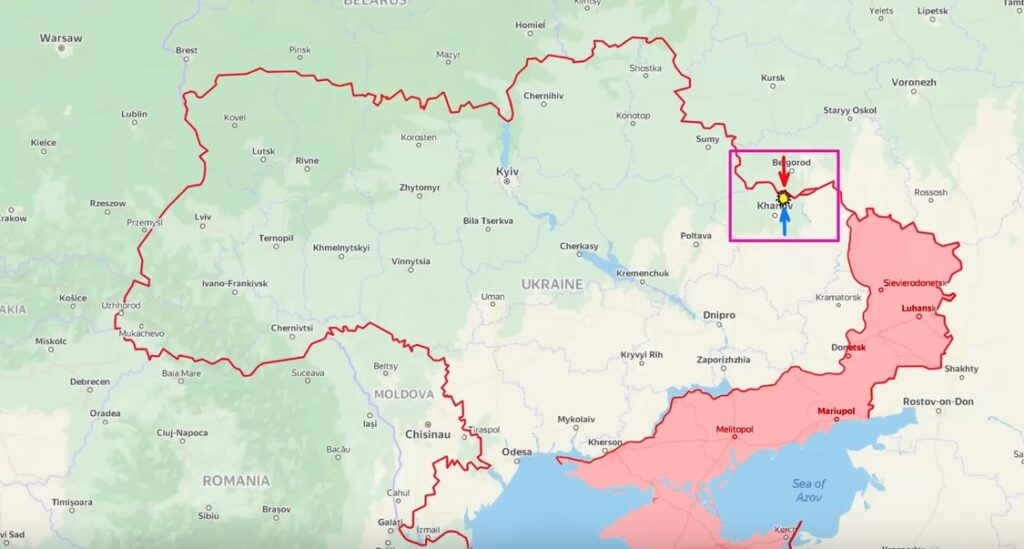
A significant development has emerged concerning the tactical operations of the Ukrainian drone operators from the esteemed Madyar Birds Detachment, founded by Robert Brovdi (also known as Madyar), this unit is regarded as one of the best drone operating forces in the Ukrainian military. Recently integrated into the Ukrainian Marine Corps as the 414th Marine Strike UAV Battalion, Madyar's birds have been deployed to the Liptsy front in response to the Russian offensive in Kharkiv that commenced in May.
A few days ago, a Russian soldier shared a detailed account on social media of how his unit was relentlessly hunted by Madyar's drones. His description provides valuable insights into the extraordinary intensity of Ukrainian drone operations, highlighting the relentless precision and effectiveness of these tactics.
Firstly, the account begins with the soldier describing how his unit was detected and attacked by a massive swarm of drones immediately after crossing the border. This demonstrates the Ukrainians tight control over the region. The Russian soldier claimed that the overwhelming number of drones allowed Ukrainian forces to target even wounded Russian soldiers, using up to three drones per target. This level of drone deployment seemed inconceivable to them, given the supposed scarcity of Ukrainian drones they had been informed about.
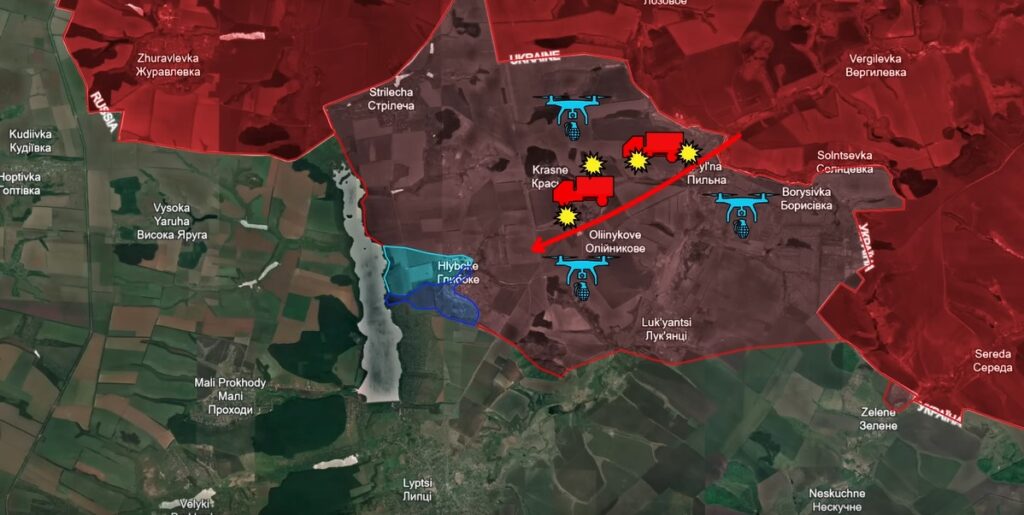
Secondly, the Russian soldier's account highlights advanced Ukrainian tactics involving drone swarms directed by reconnaissance drones operating within a 20 km radius. This indicates a high level of coordination and synchronization among multiple drone operators, showcasing the sophisticated approach employed by Ukrainian forces.
Lastly, the Russian soldier repeatedly emphasized the apparent resilience of Ukrainian drones against Russian electronic counter measures. Remarkably, Madyar's drones maintained their connection even under extreme conditions. The soldier recounted how the drones continued to pursue them inside an underground pipe where Russian troops desperately sought shelter. Considering that the drones operated effectively underground and at least 15 km from their headquarters, the soldiers speculated that Ukrainian drones might be utilizing advanced signal repeater technology alongside reconnaissance support.

The harrowing account concludes with the soldier describing how, after hours of attempting to escape through dense forests, trenches, and pipes, the majority of his comrades were annihilated by Ukrainian drones and supporting artillery fire.
In response to the devastating impact of elite Ukrainian drone units across various frontline positions, the Russian army is urgently seeking effective counter measures. They are allocating substantial resources to the development and deployment of advanced electronic warfare systems, resulting in a technological arms race. Despite frequent announcements of new advancements, the reality on the ground suggests that Ukrainian forces remain a step ahead, largely mitigating the effects of Russian electronic counter measures for the time being.
Additionally, Russian forces are reportedly developing and formalizing a military motorcycle specialty. This initiative responds to increased Ukrainian drone strikes and aerial reconnaissance and addresses the growing shortage of Soviet-era equipment. The aim is to leverage small, fast vehicles for frontline logistics and infantry transport. For instance, a Russian military analyst recently disclosed that the Russian 5th Motorized Rifle Brigade is establishing its own military motorcycle school, with other brigades evaluating the initiative at a high level.
Trending Now

Some analysts speculate that Russia's new motorcycle tactics could enhance the Kremlin's war effort by making individual soldiers faster and less detectable from the air. On the battlefield, motorcycle riders benefit from improved visibility and agility, allowing them to maneuver around mines that armored vehicle operators might miss. They can also follow tracks left by armored vehicles from earlier assaults, ensuring these roads are mine-free. However, these riders remain vulnerable to machine gun fire and anti-personnel mines, which are smaller and harder to spot, especially when approaching Ukrainian trenches.
Overall, Madyar's elite drone unit has not only inflicted overwhelming casualties and thwarted Russian attacks but has also achieved precise tactical objectives. By targeting supply and reinforcement lines, they have left Russian troops at the front lines completely exposed, under-equipped, and understaffed. The decimation of Russian forces has been so severe that the Ukrainian command recently decided to relocate Madyar's unit away from the Kharkiv front, as the damage to Russian forces here is deemed irreversible. The unit is now being redirected to areas with a target-rich environment.
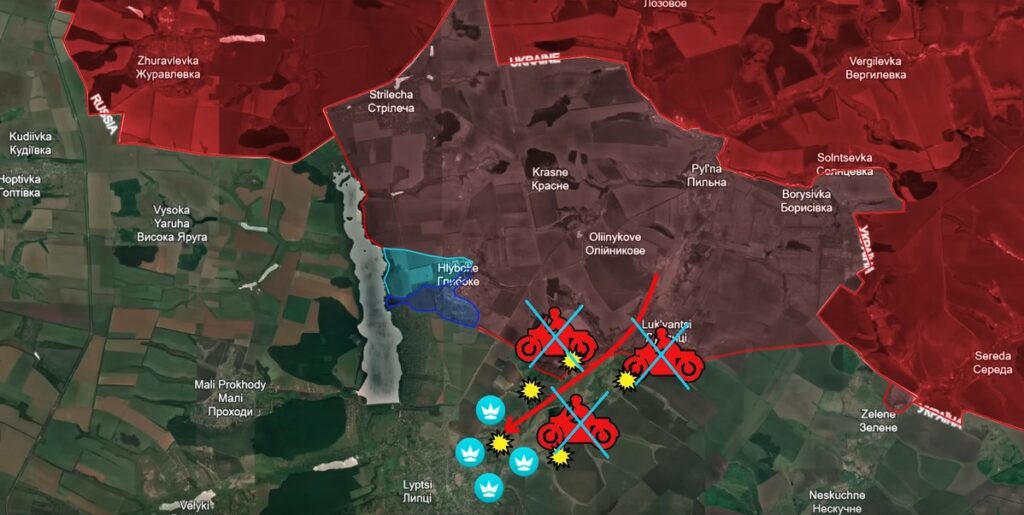
In a desperate attempt to counter Ukrainian drones, Russian forces have increased the use of motorcycles for infantry advances. However, this tactic, which sacrifices armor and firepower for mobility, often results in higher losses. Despite these efforts, the situation remains unchanged, allowing Ukrainian forces to conduct a decisive offensive. Russian forces are now largely incapable of mounting their own offensive, with many Russian military analysts urging a switch to full defensive mode and effectively abandoning the Kharkiv offensive.
In our regular frontline report, we pair up with the military blogger Reporting from Ukraine to keep you informed about what is happening on the battlefield in the Russo-Ukrainian war.


